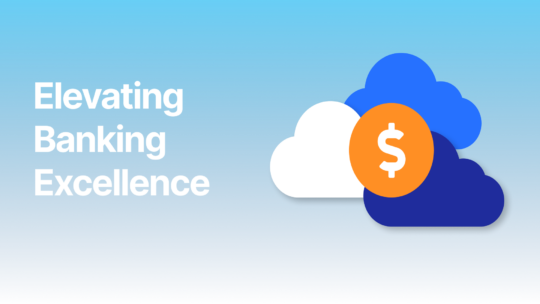Demand forecasting is the process of predicting future demand for a company’s products or services. Understanding how many customers will want to purchase or use something is critical for acquiring inventory, planning capacity, scheduling resources, producing products and managing the supply chain.
How many people should you schedule for a work shift? How many widgets should you produce this quarter? When should you build additional capacity into your systems? These are challenging questions to answer using only brain power and rudimentary tools like spreadsheets.
Machine learning (ML) is changing that. It has the power to factor in numerous sources of data in order to create a more accurate forecast than traditional methods. ML models also have the advantage of being able to work at scale, so you can forecast many more factors related to your business.
Anodot has developed an ML-based system for autonomous forecasting of business growth and demand. Anodot’s Autonomous Forecast solution automatically manages the sophisticated machine learning required to create, train, tune and deploy a customized forecasting model. Customers experience highly accurate forecasting with a turnkey experience, meaning the solution can be used without needing to have a data scientist forecast the time series metrics.
Anodot has been working with a wide range of early adopters across numerous industries who are improving their ability to predict demand by using our Autonomous Forecast system. Here are just a few of the many use cases that companies are discovering.
Fintech and Currency Management
A growing number of financial technology (Fintech) companies are getting into the eCommerce business of facilitating payments between parties through online funds transfer. Many of these companies operate in multiple countries or even globally, which introduces the complexity of dealing with multiple currencies and exchange rates. There’s a need to accurately forecast the demand for funds in order to ensure there is money in the bank when customers want to withdraw their money. Determining the optimal bank balances based on true demand is therefore a very real challenge.
Anodot has been working with a payments company that has multiple bank accounts in multiple countries and multiple currencies. The company’s treasury manager wants to know how much money they need to allocate to each currency and each country, and whether the allocations should be daily or weekly.
Anodot demand forecasting can help companies like these solve their supply and demand challenges: the demand of customers withdrawing funds from their accounts, and how the company supplies just the right amount of cash to cover those accounts and support customers without tying up too much cash at any given time.
A similar use case involves banks with Automated Teller Machines (ATMs). These banks want to know how much money to put in each machine in order to cover customer demand, but without putting too much money in the devices and losing the opportunity to use the funds for other purposes. If a regional bank operates, say, 50 ATMs and it puts $10,000 over customer demand in each machine, that’s $500,000 that is locked up and unused in these machines. Customer demand can change based on the day of the week, local events, extreme weather events, holidays, etc. These are the types of problems that Anodot’s forecasting solution can solve.
Network Capacity Planning
In the telecom world, a cell is the geographic area that is covered by a single base station in a cellular network. A network for wireless communications is comprised of a large number of base stations to efficiently use the radio spectrum to cover the service area. Each cell can handle a certain number of simultaneous connections and support a finite bandwidth. As the population density within a geographic area grows and more people are using applications like YouTube, Facebook and online games, that cell can quickly reach its maximum capacity (connections or internet browsing). This is the point where calls cannot go through or applications on users’ phones become slow—resulting in poor service.
The installation of new cells and base stations has to be planned months in advance, as it takes time to acquire and install the equipment. Telcos therefore need to accurately forecast the demand for the capacity of their network in order to plan for future needs. This is especially important in a geographic region where the population is rising rapidly.
Most telcos today use a manual process to forecast demand for cell capacity. Once a quarter, a team comes together to analyze the bandwidth and usage of individual cells in a given area. They do the capacity planning using spreadsheets, something that’s complex and often not too accurate.
Telco companies will also need to put their capacity planning efforts in another gear as the world begins migrating to 5G as the cellular transmission standard. The Internet of Things (IoT) is expected to have a huge impact on 5G demand, and telcos will need to prepare well in advance to avoid capacity constraints.
Anodot simplifies these challenges by not only looking at historical internal usage data, but by including external data such as housing starts in a given region, and openings of or future plans for densely-populated facilities such as hospitals, schools and office buildings. By observing or anticipating population changes, the telco can more accurately plan for capacity demand with sufficient lead time for installation of new cells or base stations.
Inventory Planning for Retail
There’s more pressure than ever on retail stores to get it right when it comes to inventory planning. No retail establishment wants to lose sales because items are out of stock, or conversely, to be stuck with items that just don’t sell at full price. In this hyper-sensitive climate for retail, the store or company that does a poor job of inventory planning won’t stay competitive for long.
Consider the case of a nationwide home improvement store. Inventory planning is a complex task that needs to take into consideration many factors, such as seasonal sales (garden plants in spring, snow shovels in winter); geographic location (those snow shovels won’t sell well in Florida!); local real estate conditions (older homes need repairs and updates, newly constructed homes need accessories and basic home supplies); the pace of area home sales (new homeowners want a fresh coat of paint); and so on. There are some things that every store across the country will need to stock (like generators and grills), and other things that only certain stores carry (like brackets for hurricane window coverings).
Anodot can take all these considerations into account and produce forecast demands on a storewide or regional basis. The more accurate the inventory planning for each store, the higher the customer satisfaction will be, and most importantly, the higher the product margins and revenue will be for the retailer.
Another industry that has a strong need for capacity planning is shipping/product delivery. As eCommerce continues to grow, more items are being delivered directly to customers. Whether it’s a package from Amazon or a meal from DoorDash, companies need to accurately project the need for their delivery services in order to schedule enough drivers and vehicles and to know that there is sufficient capacity for packages in the vehicles. Amazon might use efficient small vans to deliver packages during slow-season months, but move up to large-capacity trucks in the run-up to major holidays.
Optimal Staffing to Provide the Right Customer Experience
The gaming industry includes casinos where people enjoy playing a range of card and table games. One of the challenges of operating a physical (not online) casino is to forecast how to staff the game floor and open or close tables such that the optimal number of players can be seated at the table of their choice.
Casinos fill their floors with game tables, but not all tables are open all the time. This is to encourage “enough but not too many” players to have a seat at a table. For example, if there’s only one player at a blackjack table, the experience for the player may not be as much fun as when there are other players at the same table. If there are too many people around that one table, the game might take too long and players will lose interest. That’s not good for either the bored player or the casino, which never wants to see a player lose interest, so other tables might be opened to move some players over to it instead.
This is a multi-dimensional case of supply and demand. The casino wants to forecast demand for seats at the gaming tables in order to schedule the right number of dealers for a given shift. Although there might be 20 blackjack tables on the floor, they won’t all be open simultaneously (unless the house is quite crowded). Tables open and close all the time based on the number of players at any one time. So, during a Monday afternoon shift, there might be five or six dealers scheduled to work, but only three or four are working the open, active tables. The other dealers are idle in case more gaming tables need to be opened.
Demand forecasting can solve these questions of how many dealers to schedule, how many tables to open and how many players are expected during different time periods of the day and week. Accurate forecast results can enhance the customers’ experience of gaming as entertainment, while also ensuring the casino optimizes its staffing levels and maximizes its potential revenue per table.
Getting the Forecasting Answers You Need
These are just a few examples of demand forecasting utilized by different industries for vastly different scenarios. Just about any type of company can benefit from demand forecasting to optimize the use of business resources, and at the same time create a positive experience for their customers.
Talk to an Anodot sales representative today, to discuss the right forecasting solution for you.




